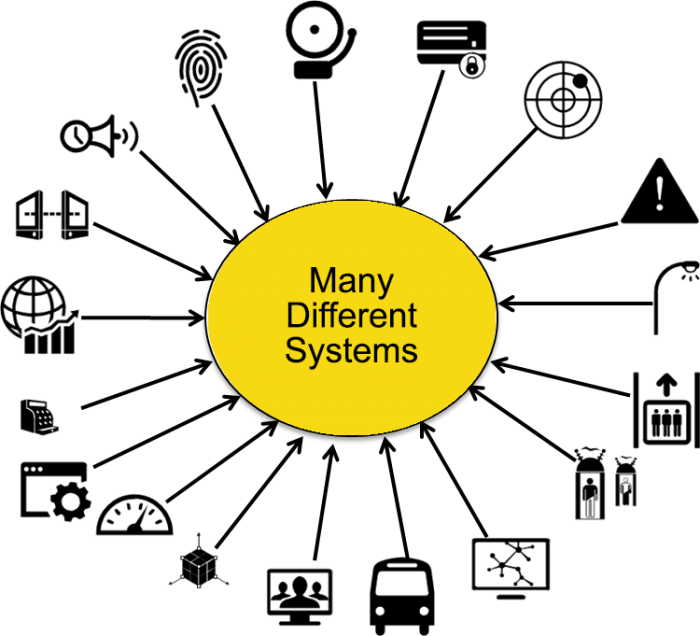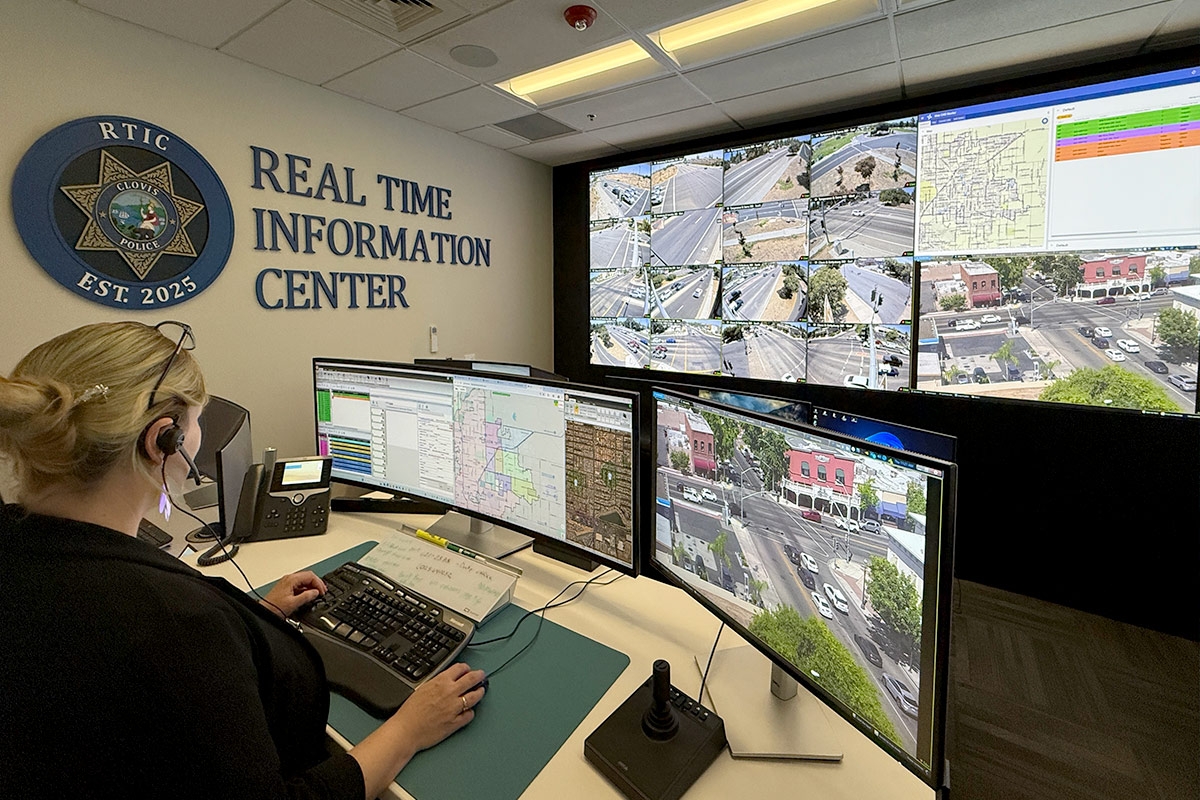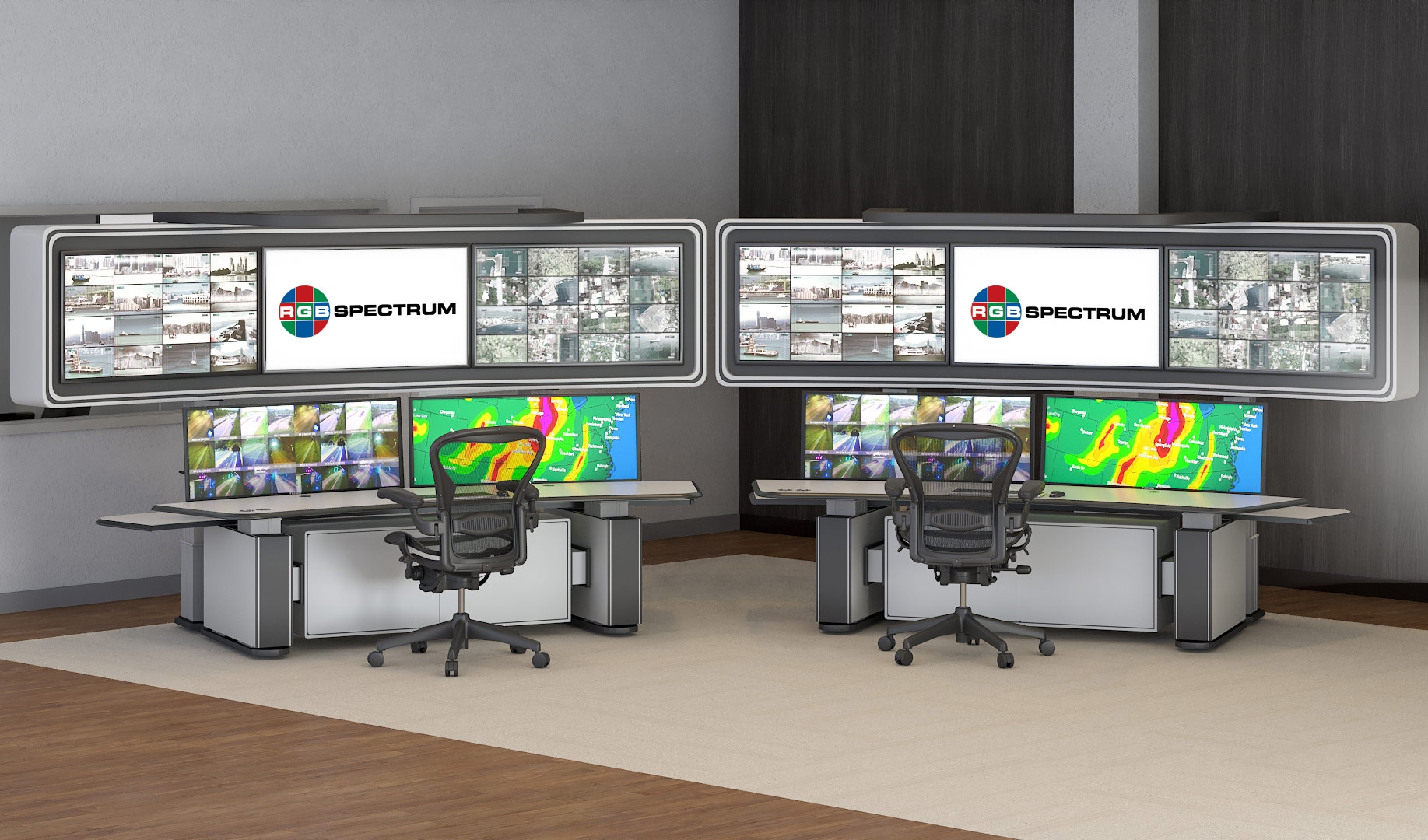A Smarter Approach to Systems Integration
Integrating disparate computer systems is a constant challenge for those seeking to effectively manage control room resources. Traditional approaches often fall short because they are too complex, time-consuming, and costly. RGB Spectrum offers a better solution: integrating with video.
Systems integration can be defined as follows: “In information technology, systems integration is the process of linking together different computing systems and software applications physically or functionally, to act as a coordinated whole” (Wikipedia definition of “Systems Integration”). In other words, systems integration aims to allow disparate systems to communicate with each other and be controlled in a unified manner.
Technological innovation has led to the automation of more and more facets of business processes, increasing the number, type, and complexity of systems requiring integrated control. Consider the example of building automation. In general, a building will have systems that monitor and control various components including HVAC, access points, elevators, water systems, lighting, fire alarms, announcement and intercom systems, burglar alarms, phone networks, location tracking, and video surveillance equipment amongst others.
These discrete systems are typically monitored by several different operators. However, they are also interrelated, and issues related to one system can also affect other building systems. To ensure optimal functioning of the entire facility, systems need to be able to communicate with each other, and all systems should be easily accessible in case of emergency. Such unified control can only be accomplished through system integration.
Traditional Integration Strategies
With the traditional approach to systems integration, custom software enables systems to communicate with each other. This is a time-consuming, difficult, and expensive undertaking. In many ways, this integration approach is akin to running on a treadmill that you can never turn off: every time an integrated application is upgraded (which happens with increasing frequency nowadays), the communication links between every system must be updated as well, requiring additional cost and time. Traditional integration with custom software creates dependencies that may severely limit your ability to upgrade/update individual systems.
In addition, today’s complex systems must provide flexible access to data. Who requires access to what information and when can change dramatically over a day. In addition, system information must also be securely protected from unauthorized access or tampering. It is becoming increasingly imperative for control room systems to offer a high level of operational flexibility, while still effectively regulating control and access to resources. These are valid concerns for any organization attempting to centrally command and/or control people, places, processes, or technology.
Integrating with Video: A Better Solution
RGB Spectrum offers a smarter solution for systems integration. Every system has a way to present visual data to operators. This usually involves some kind of Graphical User Interface, or GUI, which provides operators with direct access to system information. For every system, these visual signals, or video, enable the interaction between operators and systems. For this reason, integrating using video signals rather than custom software is a more logical choice when your objective is to consolidate control of all system resources.
Building upon this concept, RGB Spectrum has created a comprehensive set of tools that can integrate systems using video. RGB Spectrum technology allows video from different systems to be captured, switched, processed, composited, displayed, and controlled, all without the need for traditional software integration.
These are the key elements of RGB Spectrum’s integration solution:
- Video-based Integration – Almost every system has some type of standard video output: VGA, HDMI® or DVI. RGB Spectrum captures and processes these video signals at full wire speed. Plug the video output of any system into an RGB Spectrum processor and it can become an integrated and controllable part of the system.
- Unified Control Interface – Video signals from different systems are consolidated to appear to end-user operators as part of a unified control platform.
- KlickSimple™ Technology – Keyboard and mouse (KVM) control can be shared over a private Ethernet network between the source systems and end-user operators. This private network transports only keyboard and mouse commands to protect system resources.
- Integrated Visual Management – Operators can share videos and display them on a video wall with a simple mouse click using the intuitive and easy-to-use View Controller to manage control of visual resources.
- IP Transmission – Video and KVM control signals can be encoded for transmission over IP networks for both remote inbound system viewing and/or control and remote operator collaboration
- Scripting and Control APIs – These allow complete access to the video processing environment for automation purposes without create dependencies between source systems.
RGB Spectrum’s control room integration platform provides several key benefits. The system is designed with an “air gap” that separates operators from the systems they control. Operator workstations are not directly networked to the source systems, reducing the possibility of infection by malware or other viruses. In addition, source systems can be updated independently of each other, without any software dependencies. For multiple-user environments, sophisticated control arbitration features allow operators to share control over system resources and enable administrators to delineate/restrict access levels. Video from several source systems can be composited into a single video signal which can then be encoded and distributed to remote users, reducing bandwidth requirements. Finally, real-time video processing allows all operators to see the same video at the same moment, with no encoding delay variation.
Using video as an integration enabler reduces the time required to implement complex integration projects and it eliminates issues related to system inter-dependencies. It allows systems that otherwise could not be integrated to be displayed and controlled like any other resource. It provides operators with a unified desktop control interface that is intuitive and easy to use.
Integrate your systems the smarter way—with video.
RGB Spectrum is a leading designer and manufacturer of mission-critical, real-time audio-visual solutions for a civilian, government, and military client base. The company offers integrated hardware, software, and control systems to satisfy the most demanding requirements. Since 1987, RGB Spectrum has been dedicated to helping its customers achieve Better Decisions. Faster.™


